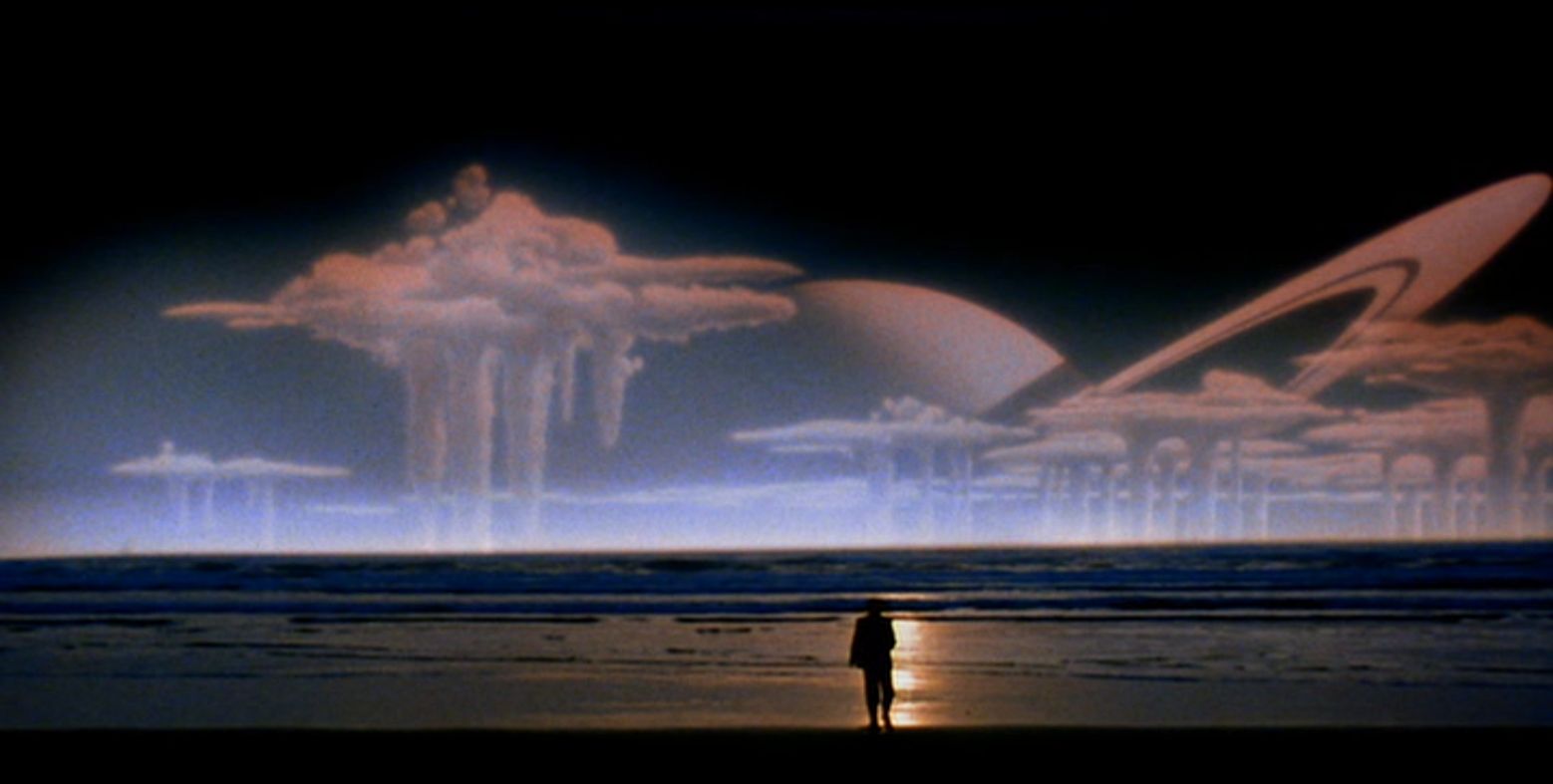
If it wasn’t for the “B Movie” phenomena, many A-List actors might have not gained much attention from high caliber directors and producers. These particular films usually have a low budget, but possess a certain amount of originality because of various short comings, like plot plausibility, poor acting and cheap effects.
Regardless, some develop cult followings that were once reserved for the Midnight Movie Circuit, Drive-In Theatres, home video rentals and late-night television programming, which have all been replaced by online streaming sites.
As long as there will be struggling filmmakers, there will never be a shortage of films that have to compensate with the limited resources that their budgets allow their visual dreams to manifest. The next challenge they face is acquiring a supportive audience who is in on the scheme and is equally devoted to push for a committed fan-base.
The following list contains campy films from the 1980s, when there was still hope to find an audience with a less distracted attention span. Many had to use gratuitous sex and violence to attract attention, but used it in “good-bad” taste.
One could argue that they don’t make films like these any more, but that’s simply not true. B-Movies, Cult Classics and Trash Pics will always find their place and people who appreciate them, even if it takes multiple viewings, copious intoxicants and several years from those who brave enough to think outside of Hollywood’s rebooted remakes and superhero sensationalism.
1. Forbidden Zone (1980)
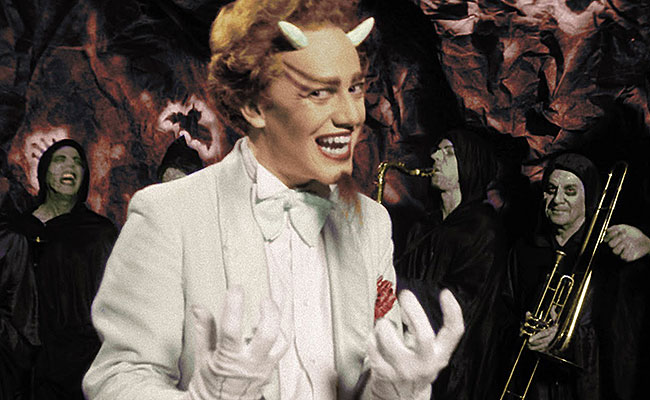
In Venice, California, a drug dealing pimp owns a house that containing a portal that leads to the Six Dimension. After stashing heroin in the basement, he sells the place to the unsuspecting Hercules Family. Frenchie and her brother Flash talk with a schoolmate, Squeezit, who says that his missing transgender sister has fallen into the Sixth Dimension and hopes to be re-united with his sibling.
Returning home, Frenchy ventures down into the basement, discovers the portal which leads her into the Forbidden Zone and is captured by the Princess who brings them to the midget King Fausto (Herve Villechaize) and Queen Doris (Susan Tyrell). However, the King falls in love with the new concubine, much to the dismay of the jealous Queen.
Directed by Richard Elfman, “Forbidden Zone” is a black and white musical comedy based on his brother Danny’s musical theatre group, the Mystic Knights of the Oingo Boingo. John Muto’s animation was used to enhance the surrealistic story of the alternative universe.
The cast also features appearances by Warhol Superstar Viva, the Kipper Kids and many other unknown characters. Danny Elfman (whom also plays Satan), composed all the music, making it his debut as a conductor, before his band, Oingo Boingo released a proper album.
Upon its release in the 1980, the film received negative reviews and protests for racism, sexism and anti-Semitism. However, it gained a cult following regardless of the controversy. In 2004, it got digitally restored, then colorized in 2008 for a DVD release. The Elfman Brothers are currently working on a sequel.
2. Galaxina (1980)
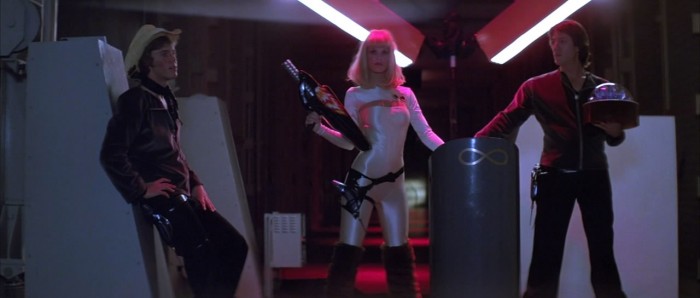
In the thirty-first century of the year 3008, an intergalactic police squad is on duty in space. On board is an incompetent male crew, with Galaxina (Dorothy Stratten) a beautiful blonde android servant. Together, they are transporting an alien rock-eating prisoner. While hiding behind an asteroid, the space cowboy piolet Buzz McHenry’s attention is diverted by a bird-like ship and after a brief exchange of laser fire, they decide to follow it.
Over dinner, the crew are entranced by Galaxina’s beauty and their captain, Cornelius Butt, becomes ill upon eating an alien egg. The crew are told to proceed to the prison planet and recover a stolen gemstone, which will take the ship twenty-seven years to complete requiring the humans to endure a cryogenic sleep. While they are in stasis, the android servant reprograms herself and adapts the ability to talk and become more human.
Written and directed by Williams Sachs, “Galaxina” is a low-budget spoof/homage on science-fiction epics like “Star Wars”, “Alien” and “Star Trek”. It was also the film debut of Playboy Playmate Dorothy Stratten, who had brief career as an actress. In 1980, she was murdered by her estranged husband who then committed suicide.
The feature was released two months before her death, but there was never a proper premiere of the feature. However, despite the box office failure, the movie won the Audience Award at the Brussels International Festival of Fantasy Film in 1983.
3. Fear No Evil (1981)
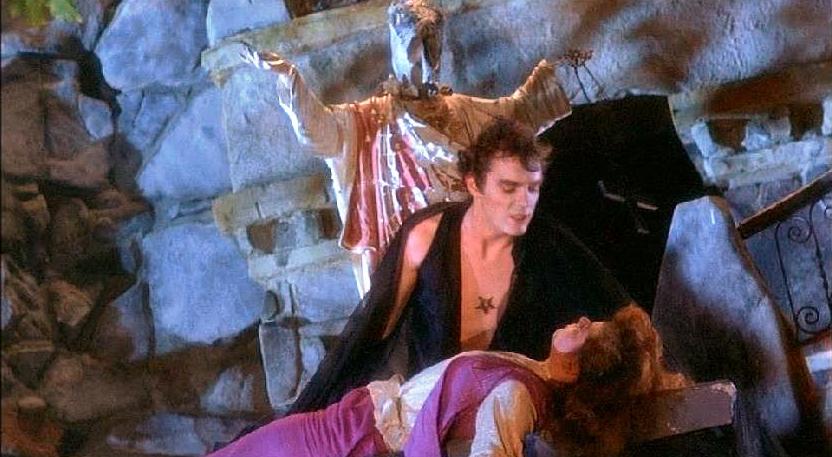
In an ancient time, an elderly priest hunts down and destroys Lucifer, who vows to be reborn. Advance to the present year, Andrew (Stefan Arngrim) is a bullied, effeminate high school honor roll student that possesses satanic powers. On his eighteenth birthday, he causes an accident that cripples his mother and turns his father into an abusive alcoholic. Meanwhile, the Archangel has returned to Earth and encounters a teenage holy-roller Julie, whose boyfriend was killed. Together
they must stop the human personification of Satan. Andrew, embracing the fact that he is Lucifer reincarnated, conducts a massive ceremony on a secluded island and begins to wage an unholy war upon on those who have abused him.
Written and directed by Frank Laloggia, “Fear No Evil” is a twisted and creepy low budget take on satanic cinema similar to “The Omen” and “Carrie”, under the influence of Hammer Films. While the feature didn’t gain any attention upon being released, in has since grown a cult following, all puns intended.
Lucifer, played by Richard Jay Silverthorn, later authored the movie’s novelization, having bought the rights from Laloggia for one dollar. Also worth noting is the excellent soundtrack featuring the Ramones, the Rezillos, the Sex Pistols, the Boomtown Rats, Patti Smith and several other pioneers of the late 1970s punk rock.
4. The Pit (AKA Teddy) (1981)
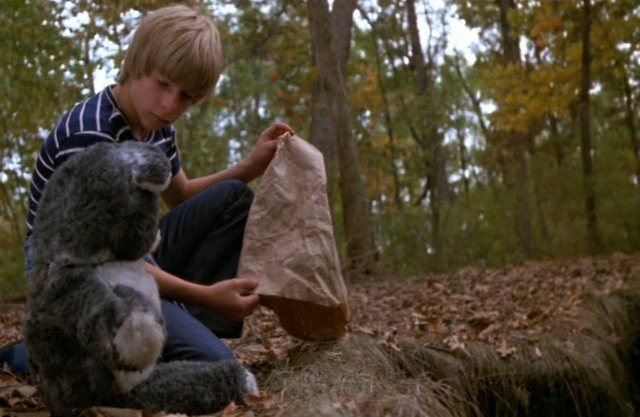
In a small mid-western town, Jamie (Sammy Snyders) is twelve-year-old boy who is an outcast and his parents are usually traveling. The only confidant and friend that he has is a talking stuffed bear named Teddy.
Nearing puberty, he develops an unhealthy fixation with girls and falls in love with his babysitter, a psychology student, Sandy (Jeannie Elias). Eventually, Jamie tells her that in the forest he has discovered a pit which is full of odd creatures and feeds them raw meat. Under the suggestion of Teddy, he begins to lure his enemies into the pit to devoured.
Directed by Lew Lehman, “The Pit” is a comedic horror tale of a disturbed pre-teen boy who gets revenge on bullies and other people who disappoint him. Although Ian Stuart’s screenplay was much darker than the film was, the novelization entitled “Teddy” by John Gault stayed faithful to the source material. Although released by a Canadian production company, it was shot on location in Beaver Dam, Wisconsin and received mixed reviews, but became a cult classic.
5. Cafe Flesh (1982)
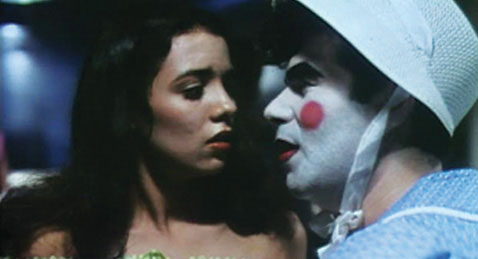
In the aftermath of the Nuclear Kiss, the survivors are divided into two groups. Ninety-nine percent of the population are listed as Sex Negatives, who become violently ill when attempting to engage in sexual intimacy. While the remaining one percent are Sex Positive who have voracious sexual appetites and are forced to perform on stage at Café Flesh for the majority who cannot participate.
The theatre is hosted by a cruel eunuch, Max Melodramatic, who enjoys taunting various attendees, in particular Nick and Lana (Pia Snow aka Michelle Bauer). With the arrival of the famous Johnny Rico (the late adult film star, Kevin James), Lana, whom has been a closeted Sex Positive, grows distant from her boyfriend.
Directed by Rinse Dream (alias Stephen Sayadian) and an uncredited Mark S. Esposito, “Café Flesh” is a satirical, avant garde post-apocalyptic pornographic film, written by Dream/Sayadian and Herbert W. Day (alias Jerry Stahl). In order to attract financers, they shot the sequences in two separate parts, porn and storyline. The original music score was composed by Mitchell Froom, who would later go on to do production work for the Bangles, Crowded House and various other well-known musicians.
Upon its release, the movie would become cult classic, winning awards and inducted into the XRCO Hall of Fame. Two sequels were later made without the help of the original creators and would not be as revered as their predecessor.
6. The Aftermath (AKA Zombie Aftermath) (1982)
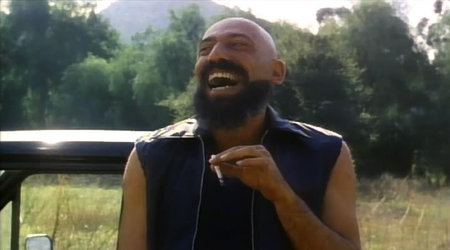
When two astronauts, Newman (Steve Barkett) and Matthews (Larry Latham), crash land on the coastline of Los Angeles, they discover that much of their surroundings have been wiped out by a nuclear war. After fighting off some mutants, they find refuge in an abandoned mansion, while Newman ventures out to find any available resources and survivors.
In his travels, he finds a young boy named Chris hiding in a museum and then later a woman, Sarah (Lynne Marguilies, former girlfriend of Any Kauffman). The only other inhabitants are Cutter (Sid Haig) and his sadistic murderous gang, who are after any women that they can kidnap and rape. Newman and his small tribe declare war on them as their own means of survival.
Written, directed and produced by Steve Barkett, “The Aftermath” is an action-packed, apocalyptic thriller based on a Stanley Livingston story. Shot in 1978, but not released until 1982 on a $250, 000 budget, with $70, 000 spent on post-production. The music score was composed by John W.
Morgan and is dramatically reminiscent of likes of “Star Trek” or anything composed by Bernard Herrmann. A must-have for any fan of post-nuclear holocaust sci-fi epics and also rare to come by. Currently, it is available on Youtube, but has been released on DVD (under the UK title “Zombie Aftermath”) and is able to be streamed online.